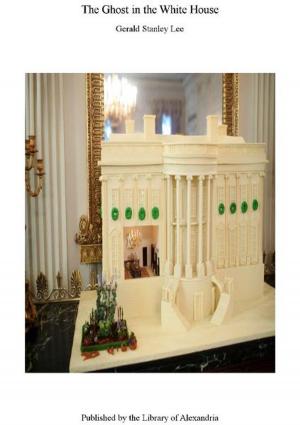Hansford: A Tale of Bacon's Rebellion
Nonfiction, Religion & Spirituality, New Age, History, Fiction & Literature| Author: | St. George Tucker | ISBN: | 9781465559463 |
| Publisher: | Library of Alexandria | Publication: | July 29, 2009 |
| Imprint: | Library of Alexandria | Language: | English |
| Author: | St. George Tucker |
| ISBN: | 9781465559463 |
| Publisher: | Library of Alexandria |
| Publication: | July 29, 2009 |
| Imprint: | Library of Alexandria |
| Language: | English |
It is the design of the author, in the following pages, to illustrate the period of our colonial history, to which the story relates, and to show that this early struggle for freedom was the morning harbinger of that blessed light, which has since shone more and more unto the perfect day. Most of the characters introduced have their existence in real history—Hansford lived, acted and died in the manner here narrated, and a heart as pure and true as Virginia Temple's mourned his early doom. In one of those quaint old tracts, which the indefatigable antiquary, Peter Force, has rescued from oblivion, it is stated that Thomas Hansford, although a son of Mars, did sometimes worship at the shrine of Venus. It was his unwillingness to separate forever from the object of his love that led to his arrest, while lurking near her residence in Gloucester. From the meagre materials furnished by history of the celebrated rebellion of Nathaniel Bacon the following story has been woven. It were an object to be desired, both to author and to reader, that the fate of Thomas Hansford had been different. This could not be but by a direct violation of history. Yet the lesson taught in this simple story, it is hoped, is not without its uses to humanity. Though vice may triumph for a season, and virtue fail to meet its appropriate reward, yet nothing can confer on the first, nor snatch from the last, that substantial happiness which is ever afforded to the mind conscious of rectitude. The self-conviction which stings the vicious mind would make a diadem a crown of thorns. The mens sibi conscia recti can make a gallows as triumphant as a throne. Such is the moral which the author designs to convey. If a darker punishment awaits the guilty, or a purer reward is in reserve for the virtuous, we must look for them to that righteous Judge, whose hand wields at once the sceptre of mercy and the sword of justice
It is the design of the author, in the following pages, to illustrate the period of our colonial history, to which the story relates, and to show that this early struggle for freedom was the morning harbinger of that blessed light, which has since shone more and more unto the perfect day. Most of the characters introduced have their existence in real history—Hansford lived, acted and died in the manner here narrated, and a heart as pure and true as Virginia Temple's mourned his early doom. In one of those quaint old tracts, which the indefatigable antiquary, Peter Force, has rescued from oblivion, it is stated that Thomas Hansford, although a son of Mars, did sometimes worship at the shrine of Venus. It was his unwillingness to separate forever from the object of his love that led to his arrest, while lurking near her residence in Gloucester. From the meagre materials furnished by history of the celebrated rebellion of Nathaniel Bacon the following story has been woven. It were an object to be desired, both to author and to reader, that the fate of Thomas Hansford had been different. This could not be but by a direct violation of history. Yet the lesson taught in this simple story, it is hoped, is not without its uses to humanity. Though vice may triumph for a season, and virtue fail to meet its appropriate reward, yet nothing can confer on the first, nor snatch from the last, that substantial happiness which is ever afforded to the mind conscious of rectitude. The self-conviction which stings the vicious mind would make a diadem a crown of thorns. The mens sibi conscia recti can make a gallows as triumphant as a throne. Such is the moral which the author designs to convey. If a darker punishment awaits the guilty, or a purer reward is in reserve for the virtuous, we must look for them to that righteous Judge, whose hand wields at once the sceptre of mercy and the sword of justice















